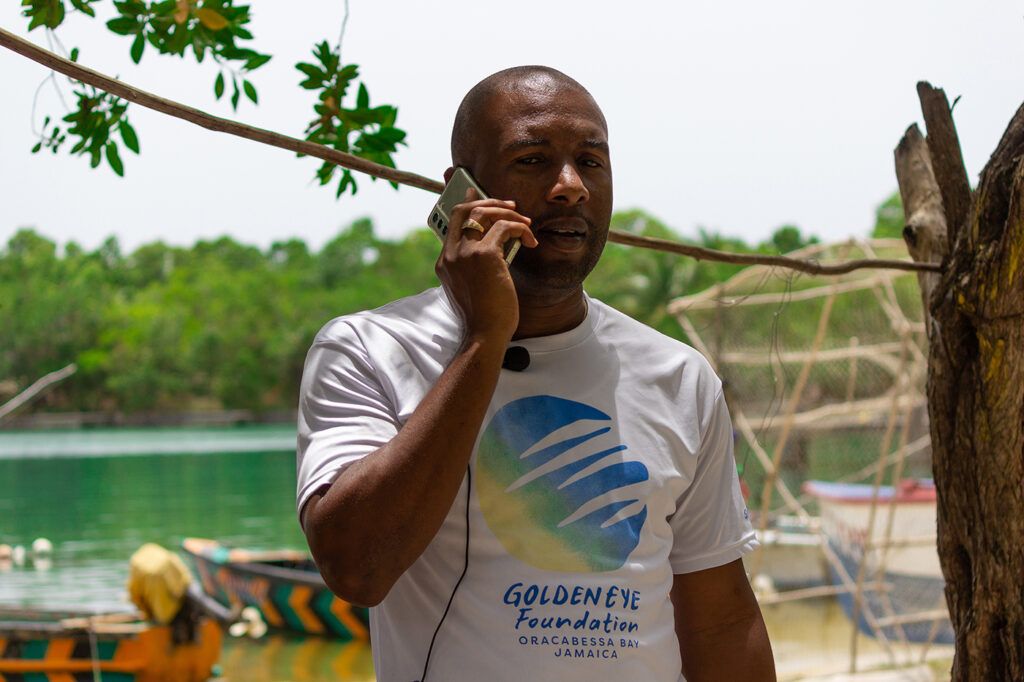
🇯🇲 Conservation project in Jamaica puts community first
Oracabessa Fish Sanctuary creates cooperation between nature and people where “nature helps support those who nurture it”.
Share this story!
Oftentimes, conservation projects overlook the people relying on the ecosystems to make a living. It usually comes across as a political or moral conviction or as a philosophy. However, at the Oracabessa Fish Sanctuary, local fishers are the reason the sanctuary’s magic and beauty remains.
On Jamaica’s coast, the communities rely on fish. For example, they create jobs by selling and reselling fish, crafting and repairing fishing equipment and so on. They can also fish for dinner now that the food prices are skyrocketing.
However, endorsement and critical stakeholders are a huge part of creating a successful conservation project. In Jamaica, fishers are independent which means it can be difficult to get them on board.
“To have any kind of success, you have to centralize and organize,” says Captain Murray, a vessel operator and warden at the Oracabessa Fish Sanctuary to Yes Magazine. “Fishers don’t want to do that, because they may believe that it might cost them more.”
So in order to solve this, the fishers were invited to help shape the conservation project from the get-go.
“For one thing, we allowed the fishers to decide the boundaries of the sanctuary so they actually chose how much they gave up,” says Travis Graham, a board member of the Oracabessa Fish Sanctuary. Second, he says, “All of our wardens are fishermen. We’ve created a source of employment for them through that role, so they understand that they benefit in more than one way. The commitment comes from that.”

Yes Magazine explained it as “the group was able to create a feedback loop where nature helps support those who nurture it”. The Oracabessa Bay’s Goldeneye hotel and James Bond beach fronts have been home to the 185-acre big fish sanctuary for over a decade now.
The sanctuary has enough money coming in to pay the captains and wardens who patrol the borders thanks to the dive shop and tourist customers from the hotel. Even though the hotel owns much of the land, the sanctuary itself is open to the public in areas where the beaches are public.
Yes Magazine explains that the staff, which consists of 18 people, manages and maintains the resources as well as a series of programs. They write “this sanctuary is always buzzing with activity: educational school tours, maintaining and upgrading the budding coral gardens, and the newly installed sea urchin nursery. The sanctuary has met its ambition of planting 18,000 corals annually and releasing more than 20,000 sea turtles each year.”
As the Oracabessa Sanctuary continues to expand and grow, the group wants to add more conservation education programs and a sea urchin nursery in order to raise more of the animals that are essential to a reef's health.
According to Jamaica’s National Environment and Planning Agency’s island-wide reef survey, between 2013 and 2020, the abundance of fish island-wide has increased more than fivefold. Also, NEPA’s reef survey shows a slow but strong rehabilitation taking place.
In White River, a sanctuary uses a similar method as the Oracabessa one. They operate under a partnership between fishing entities and the tourist sector.
“It’s community-based, so 50% of all our operations and decision-making is in the hands of the White River Fisherman Association, and the other 50% is contributed by White River Marine Association,” says Reanne McKenzie, general manager of the White River Fish Sanctuary.
“We really want to get to a point where we have so much of the community and surrounding areas sold on this conservation idea that we won’t really have a need to police waters,” McKenzie says.
By becoming a premium supporter, you help in the creation and sharing of fact-based optimistic news all over the world.


